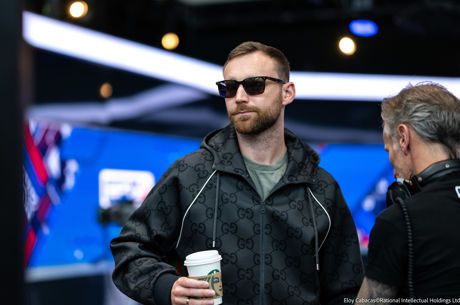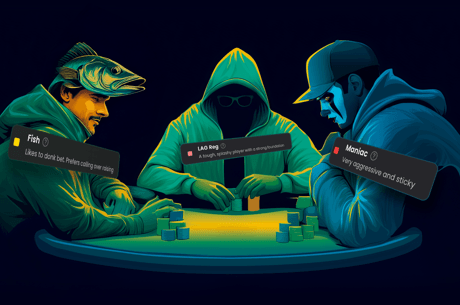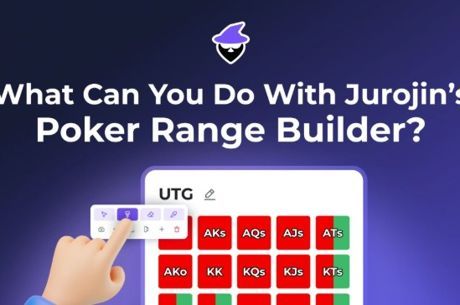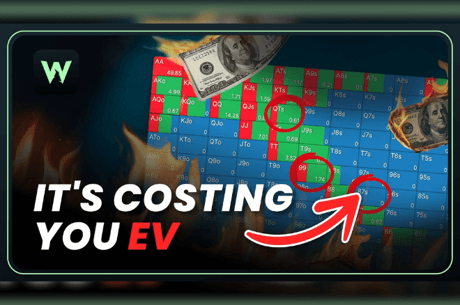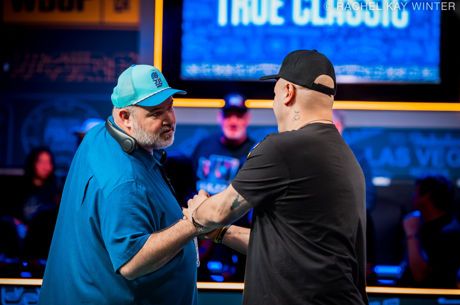Obsessed with Human Behavior: Going “Beyond Tells” with Blake Eastman

“When I’m in front of people, everyone is a puzzle, and I’m trying to crack it.”
So says Blake Eastman, a man with many abilities, interests, and ambitions. He has a graduate degree in psychology, is a former adjunct psychology professor at the City University of New York, a former professional poker player, a current poker coach, and the creator of Beyond Tells, a poker tells training site.
Eastman’s more lofty ambitions involve studying human behavior in a broader, more real-world context. He is the founder and owner of the Nonverbal Group, a New York-based body language company that offers consulting to individuals and companies for real-world challenges, such as analyzing interview footage and conducting negotiations.
As someone also interested in poker tells specifically and human behavior in general, I recently took the opportunity to talk with Eastman. Here is a partial transcript from our conversation.
Zachary Elwood: Tell me about how you got your start playing and coaching poker.
Blake Eastman: When I first started college, my goal was to go to law school. I took it very seriously. It’s all I wanted to do. I had a path and wanted to stick to it. I had a summer where I was invited to some games in the city and playing way beyond my bankroll. I admittedly got a bit lucky, but the games were pretty easy, so that helped. I made a good deal of money in one summer. It was good.
So I kept doing that. I did undergrad at CUNY in forensic psychology and then in grad school I started teaching psychology. I worked with a lot of felons. I worked in an out of the prison system and assessed people for a wide range of things.
I got the idea for School of Cards, my poker training company, in 2009. We started out holding classes in a room at a YMCA. (What was funny about that — there was a Gamblers Anonymous meeting right downstairs. The organizer was like: “Hey, listen, just so you know, we’re down there, so could you just keep it down?”) But it was going well so I moved into a rented space not long after.
Tell me about Beyond Tells.
I came up with the Beyond Tells idea a few years ago. The vision was for it to be a way to educate poker players with real game footage about poker behavior. They’d be able to see the patterns for themselves.
We set it up games in our School of Cards space, with a curtain around the game. We videotaped the games from every angle. We didn’t use RFID or hole card cams, because I really think those influence how people act and will skew the results. Instead, whenever someone folded, an assistant would write down what cards the player had. We wanted it to be accurate. The plan was to analyze all this footage and find real, practical patterns.
Beyond Tells was never supposed to be my main project. It was supposed to be a stop on my road to doing some bigger behavioral things. I had the Nonverbal Group, which I was working on at the same time. But I’m kind of obsessive. I had planned to finish the Beyond Tells course in just a few months. I don’t know what I was thinking because it ended up taking me two years. But we were getting beta testers during that time giving us feedback, so it was worthwhile and we learned a lot.
And we watched so much footage and we make interactive practice tests. I went nuts. Part of that is that this was the first time I was putting myself out there in the poker community, so I wanted it to be great. Another part of it is that you start to write about these things and you start looking at all these ways to optimize it.
That reminds me of writing my book Verbal Poker Tells. I thought it would take me a couple months. I ended up working on it full-time for eight months.
Yeah. When you start to write and think about these things, you start to add clarity to your own ideas and it’s like a spider’s web.
You also start realizing all the ambiguity in the language. You start thinking, “that’s not the best way to phrase it… what is the best way to phrase it?” And then you get more clear on the philosophy behind it.
We’ve accumulated more than 384 hours of real poker footage for Beyond Tells. And we’ve reviewed that footage multiple times. Honestly, I’ve spent a lot of money and invested a lot in Beyond Tells. Maybe more than I should have. But I wanted to do it right.
One example: we paid people to count every single blink in our footage. It was 63,000 during-hand blinks — even more outside of hands but those aren’t really relevant. But the point is I was obsessed with recording and finding a way to standardize talking about those behaviors.
Have you found any reliable patterns when it comes to blinking?
Blink rate is relevant in a lot of areas. The main problem in using it is context. Meaning a lower blink rate isn’t, on its own, necessarily indicative of strength or weakness. You need a process to figure it out. However, we do have some players in our sample where a significant decrease in blink rate almost perfectly correlates with strength.
Blinking also becomes relevant when it comes to what we call concealment strategies…. When there are these big moments, like someone making a big bet on the river, most people think there’s going to be some pattern that stands out. But really, the tell might be the concealment strategy the person is using to conceal their behavior.
And there’s different kinds of concealment strategies. For example, some people are always still when they bet on the river, strong hand or weak hand. But, when they’re bluffing, they’re noticeably more still than when they’re not. So it’s like the cognitive effort that someone uses to hide their behavior is often their tell.
So blink rate can be a part of a concealment strategy. But the only way you get this data is watching someone for a long time. It’s not easy. It’s easier when you have the luxury of being able to comb through a large sample size and show the same people with all different kinds of hands — then you can see the difference. But in reality it’s tough.
But this is why I place a lot of emphasis on a player’s preflop behavior — it creates a key you can use to describe postflop behavior. Let me put it this way... it’s very hard for me to get a solid read on someone unless I’ve seen what happened pre. That’s why you can’t use the WSOP footage. I wish that they would just not cut every single second.
I know. It bugs me so much. That’s why it’s so great that you have your footage. I watch all these televised things and I’m like: “Oh I want to see what happened right before that or what happened with that guy after they cut away.”
And seeing the hole cards creates so much cognitive bias. People have no idea. It’s so easy to find things when you know the cards. Part of our content is: I don’t talk like that. I don’t look. In the first few hands, I say, “This could be something, this might not be something; it’s too early to see.” And in hand number six, I’m like, “It’s probably something.” And in hand number ten, I’m like “It’s definitely something.” Then at the end, we give actual breakdowns, like “This meant something 22% of the time, or this meant something 85% of the time.”
Speaking of your larger goals of studying and understanding human behavior, have you found that studying poker tells increases your understanding in non-poker situations?
I’ve had a few autistic people — highly-functioning — tell me that the course has helped them understand people’s behaviors better. I don’t think it’s that helpful. I think paying attention to things like this makes you more sensitive at watching people in general. But there’s a limit.
The great thing about studying poker is that it’s so structured. Real-life situations are not structured like that. We can easily talk about what it means when someone rechecks their cards twice in different situations. But it’s harder to talk about all the different meanings smiles can have in social or work situations. Depending on what system you use, there might be hundreds of types of smiles. More important than categorizing the exact appearance of the smile is... how long does the smile take? How long does it take to go away? When exactly does it appear? Things like that.
Yeah, I’ve found the movement of the smile is much more relevant. The time-based stuff is so much more important than just the fact that someone smiled.
Right.... We’re [also] going to use Oculus Rift on Beyond Tells. Oculus Rift is the virtual reality headset. We’re building a rig — it has cameras that record in a 360-degree environment, so you can put on the headset and record and someone watching it later. It’s like they’re there.
That would be awesome. You would get so much attention for that. I’ve had that idea, too. I was thinking how Twitch is so hot right now for online poker and what’s the only way to make something like that live? It’d have to be something like that, because one camera just wouldn’t be compelling or interesting. Obviously hard to pull off but that’s awesome if you can do it.
We were going to have a booth at the WSOP this year. But we didn’t do it. One of the things was I’m playing maybe 10 WSOP events this year and I’m going to be focused on playing. So I know if we did it, it would take away from my focus. I’d be focused on the booth. But we’re going to do it. That’s the future.
You can learn more about Blake Eastman’s Beyond Tells and watch free demo videos at www.BeyondTells.com. You can visit Eastman’s Nonverbal Group at www.NonverbalGroup.com.
Zachary Elwood is the author of the books Reading Poker Tells and Verbal Poker Tells, available in paperback and e-book formats via via Elwood's website. He recently released a new poker tells video series, available at www.readingpokertells.video.
Want to stay atop all the latest in the poker world? If so, make sure to get PokerNews updates on your social media outlets. Follow us on Twitter and find us on both Facebook and Google+!



